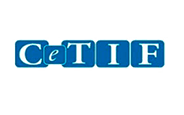Financial Industry Transitions to T+1 Settlement Cycle. Is Europe ready?
by Silvia Adobati and Mattia Spinelli

In February 2023, the US announced significant rule changes leading to a new era for broker-dealer transactions in the U.S. and Canadian securities markets. The standard settlement cycle, currently two business days after the trade date (T+2), will be shortened to just one day (T+1), with the compliance date for these final rules scheduled for May 28, 2024. This crucial shift has had repercussions across the global financial landscape, triggering discussions and considerations for similar transitions in other major financial markets. While China has already adopted a T+0 settlement cycle for government bonds in the interbank market, India has moved to T+1. The move by the North American financial hub not only triggered reflections in LATAM and APAC markets, with Chile, Peru and Colombia committed to a T+1 shift by 2025, but also prompted valuations in the UK and EU. Indeed, AFME has launched an analysis, which will involve EU post-trade stakeholders, to assess the costs, benefits and impacts, to be finalized in the short period.
Anticipated Benefits of a Shorten Settlement Cycle
The financial industry anticipates a lot of benefits from the shift to a T+1 settlement cycle, emphasizing increased overall market efficiency, risk mitigation, optimized capital utilization, and enhanced financial stability. The key benefits include:
-
Reduction of Risk in High-Volume and Volatility Periods:
- Mitigation of systemic, counterparty, and operational risks during market volatility.
- Preservation of settlement netting benefits, reducing the volume of securities and currency movements across markets.
-
Liquidity Requirement Reduction:
- Diminished market and counterparty exposure leading to lower margin requirements.
- Empowered broker-dealers for better capital and liquidity risk management.
-
Capital and Operational Efficiencies:
- Infrastructure modernization through technology adoption, automating manual processes.
- Acceleration of industry-wide adoption of Straight-Through Processing (STP) and optimization of margin calculations.
- Adoption of best practices for transparency and real-time data access.
-
Reduction in Costs:
- Long-term cost reduction for market participants, outweighing initial transition costs.
- Long-term cost reduction for market participants, outweighing initial transition costs.
Challenges and Considerations
The implementation of the Central Securities Depositories Regulation (CSDR) has pushed EU market operators to invest in systems and processes, ensuring compliance with the requirements of the settlement framework, including reporting of settlement failures and systems for managing of financial penalties. Changing the maximum settlement date foreseen in the CSDR to reduce the duration of the securities settlement cycle would imply costs for market participants, resulting from the transition from manual processes and greater automation. Among other expenses, these costs could be passed on to customers, including retail customers, potentially impacting compliance with other EU regulations. In addition, the obstacles preventing a reduction to T+1 in the settlement cycle would persist in the case of a reduction to T+0, in particular by relying on automation and digitalization in the investment value chain.
Regarding financial penalties, ESMA has identified the risk of an increase in settlement failures with the adoption of a shorter settlement cycle, which would lead to additional financial penalty payments that market participants may face.
EU and UK Transition to Shorten Settlement Cycle
The adoption of a Shortened Settlement Cycle (T+1) in financial markets is a significant step towards enhancing efficiency and reducing risks. However, as the United States prepares to make this transition, the European Union (EU) and the United Kingdom (UK) appear to be proceeding with caution.
A move to T+1 is accompanied by the potential for increased settlement fails, leading to increased penalties for market participants. Moreover, a successful transition to T+1 requires widespread collaboration among EU and UK financial markets.
In this regard, in October 2024, the European T+1 industry task force published its recommendation on a high-level roadmap for the adoption of T+1 in the EU market, confirming that H2 2027—the date identified for the UK migration—could also be a feasible implementation date for the EU.
This entails coordinated efforts from various stakeholders, including market participants, regulators, and infrastructure providers. Achieving this level of collaboration demands careful planning, communication, and synchronization across the entire industry, making it a complex and time-consuming process. However, a proven track record of US and Canadian market migration could push the EU and UK to embrace such changes.
Hence, the EU and UK financial markets are currently navigating these challenges, weighing the benefits against the risks, starting discussions and proceeding with a measured approach towards a potential shift to T+1 settlement.
Looking to the Future: What Will the EU Decide?
As the global financial landscape undergoes a transformation, all eyes are on the European Union. Will the EU embrace the T+1 resolution cycle? What decisions will ESMA make in response to the industry’s changings? The answers could well redefine the landscape of international financial markets.
In this dynamic transition, Parva Consulting stands ready as your strategic partner, offering expertise and support to seamlessly guide you through the evolving landscape.
Share this entry

Parva Consulting recognized as one of the TOP 20 Best Companies for Generation Z

The Corporate Sustainability Reporting Directive (CSRD) In Focus
 https://parvaconsulting.com/wp-content/uploads/2024/06/New-office-in-Switzerland.jpg
450
900
Parva Consulting
https://parvaconsulting.com/wp-content/uploads/2018/04/Parva_logoBianco-266x150.png
Parva Consulting2024-06-10 07:45:012024-06-10 08:44:52Parva Consulting opens office in Switzerland
https://parvaconsulting.com/wp-content/uploads/2024/06/New-office-in-Switzerland.jpg
450
900
Parva Consulting
https://parvaconsulting.com/wp-content/uploads/2018/04/Parva_logoBianco-266x150.png
Parva Consulting2024-06-10 07:45:012024-06-10 08:44:52Parva Consulting opens office in Switzerland









